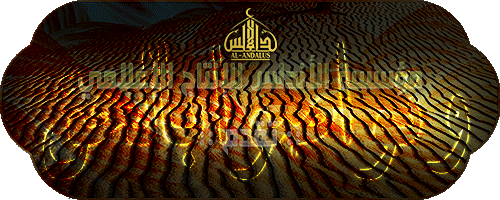
_________
To inquire about a translation for this video message for a fee email: [email protected]
Month: February 2014
Check out my new ‘Policy Alert’ for the Washington Institute: "Al-Qaeda Disaffiliates with the Islamic State of Iraq and al-Sham"
![]()
On the evening of February 2, al-Qaeda’s general command released a statement disavowing itself from the Islamic State of Iraq and al-Sham (ISIS): “ISIS is not a branch of the Qaidat al-Jihad [al-Qaeda’s official name] group, we have no organizational relationship with it, and the group is not responsible for its actions.” This is the first time in al-Qaeda’s history that the group has publicly disaffiliated itself with a group bearing its name — even though ISIS has not used the name “al-Qaeda” since 2006. While it remains too early to know its effect in the Syrian context, the statement is significant nonetheless — both historically and for what it means for the broader global jihadist movement.
Al-Qaeda’s repudiation of ISIS is highly reminiscent of the withdrawal of support by the Libyan Islamic Fighting Group (LIFG), Egyptian Islamic Jihad, Abu Qatada al-Filistini, and Abu Musab al-Suri from the Armed Islamic Group (GIA) in 1996 during the Algerian civil war. Usama bin Laden himself was highly skeptical of the GIA when it denied his request to set up training camps in Algeria, and he worried that the group had a troublesome ideology. Bin Laden even played a role in the creation of a less radical Algerian splinter entity known as the Salafist Group for Preaching and Combat (GSPC) in 1998, which changed its name to al-Qaeda in the Islamic Maghreb in 2007.
Similar to the current situation in Syria, the GIA began confronting other Islamists instead of fighting the Algerian regime. Most notably, the GIA killed Muhammad Said and Abdelrazak Redjam, leaders of the branch of the Islamic Salvation Front (FIS) that merged with the GIA in 1994, as well as killing Libyan volunteers from the LIFG. Like the GIA, ISIS’s overuse of takfir (pronouncing a Muslim an infidel) and subsequent liquidation of enemies by any means has been a source of intense grievance from other Syrian rebel groups, as has ISIS’s unwillingness to submit to an independent sharia court and its belief that it is a sovereign state in liberated territory. Acting on this belief, ISIS has extrajudicially killed, imprisoned, and punished other rebels and civilians in northern Syria.
The lessons of Algeria played an important role when al-Qaeda first took umbrage at excesses by al-Qaeda in the Land of Two Rivers (better known as AQI and one of ISIS’s earlier names) in Iraq during the last decade, when Abu Musab al-Zarqawi was still the leader. One of the letters al-Qaeda sent in 2005 to Zarqawi was from Atiyah Allah Abd al-Rahman al-Libi, one of the Libyans who went to Algeria and survived any onslaught from the GIA. The letter advised Zarqawi not to be so brutal and to focus the group’s efforts on the American forces. Libi’s lesson from the Algerian experience centered on the importance of not shedding innocent Sunni Muslim blood and the consequences it could create.
Since then, al-Qaeda’s senior leadership in Pakistan has implored its branches to refrain from attacking Sunni Muslim civilians and to focus rather on security and military personnel and their infrastructure. And on the whole, al-Qaeda in the Arabian Peninsula in Yemen and Jabhat al-Nusra (al-Qaeda’s preferred branch in Syria) have stuck to this framework, even though there has been some collateral damage. ISIS has been the exception.
While al-Qaeda’s announcement officially ends an imperfect relationship that began in 2004, signs of a rift date back to May 2013. Following ISIS leader Abu Bakr al-Baghdadi’s April 2013 announcement of the extension of the Islamic state into Syria, Ayman al-Zawahiri tried and failed to nullify Baghdadi’s power play, calling for ISIS to stay in Iraq and allow Jabhat al-Nusra (JN) to be the preferred actor in Syria. In defiance, Baghdadi released an audio message stating ISIS would remain in Syria and would not adhere to a division based on the Sykes-Picot deal from World War I.
Click here to read the rest.
New video message from Himam News Agency: "Report 56: Visit to the Sharī'ah Institute of Jabhat al-Nuṣrah in Kufr Ḥalab – Idlib"
NOTE: For previous parts in this video series see: #55, #54, #53, #52, #51, #50, #49, #48, #47, #46, #45, #44, #43, #42, #41, #40, #39, #38, #37, #36, #35, #34, #33, #32, #31, #30, #29, #28, #27, #26, #25, #24, #23, #22, #21, #20, #19, #18, #17, #16, #15, #14, #13, #12, #11, #10, #9, #8, #7, #6, #5, #4, #3, #2, and #1.
—
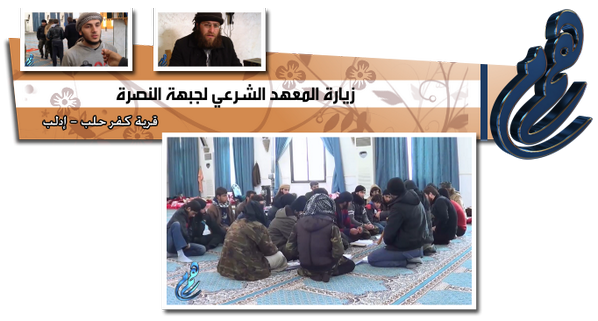
__________
To inquire about a translation for this video message for a fee email: [email protected]
New statement from Jabhat al-Nuṣrah: "Blowing Up al-Hilāl Building and Killing All Who Was In It From the Regime Forces in the Neighborhood of al-Qaddim in Southern Damascus"
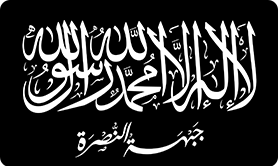
Click the following link for a safe PDF copy: Jabhat al-Nuṣrah — “Blowing Up al-Hilāl Building and Killing All Who Was In It From the Regime Forces in the Neighborhood of al-Qaddim in Southern Damascus”
_________
To inquire about a translation for this statement for a fee email: [email protected]
Hizballah Cavalcade: Selling Sectarianism: Shia Islamist Groups & Maliki’s Anbar Offensive
NOTE: For prior parts in the Hizballah Cavalcade series you can view an archive of it all here.
–
Selling Sectarianism: Shia Islamist Groups & Maliki’s Anbar Offensive
By Phillip Smyth
As the Iraqi government offensive in Anbar continues to engage Sunni groups which are protesting the government (some have now taken up arms against the government) and the Islamic State of Iraq and al-Sham (ISIS), sectarian messaging by Shia Islamist groups which support the government and its offensive has also increased.
Coming after the operation against jihadi militants on December 23, 2013 and following protests by Sunni groups (including a number of tribes), on December 25 Iraqi Prime Minister Nouri al-Maliki announced an offensive against ISIS and “armed groups” in Iraq’s Anbar province. The offensive has been controversial regionally and within Iraq, with some accusing Maliki of engaging in sectarian politics.[1] Analyst Charles Lister even called the coordinated offensive, “one move too far”.[2]
Sectarian language explaining the Iraqi government onslaught has been utilized by all sides. Even Nouri al-Maliki called the operations, “a fierce confrontation between the supporters of Hussain and the supporters of Yazid”.[3] Shia Islamist groups, including Iranian-backed and possibly those claiming to back Iraqi Shia cleric and political leader Muqtada al-Sadr, have taken the opportunity to issue statements, upload photos, and produce music in support for the Iraqi government’s operations.[4] For these groups, the offensive was viewed as a golden opportunity to demonstrate their importance to the Iraqi Shia community and to demonstrate they were assisting the fight against jihadi-type organizations. These groups also played upon sectarian sentiments to promote the Iraqi government’s operations and suggest that the Iraqi Army is a pro-Shia sectarian entity. There were also claims that some Iraqi Shia Islamist forces which had fought in Syria, returned to fight ISIS and other Sunni groups in Iraq.
Statements of Support
On December 28, Ahmed al-Alwani, a Sunni parliamentarian and protest leader, was arrested by Iraqi security forces. The raid against him resulted in the death of Alwani’s brother and a number of guards from his security profile.[5] Alwani was well-known for vitriolic anti-Shi’ite statements.[6] His arrest by Iraqi security forces was immediately praised by some Shia Islamist groups, particularly Asa’ib Ahl al-Haq, which praised the raid (see photos below). The day also saw a near simultaneous release of statements by Iranian-backed Shia Islamist organizations which are also fielding armed units in Syria.
Liwa’a Zulfiqar, a Syria-based Shia Islamist armed group, also announced its support for the Iraqi Army in its operations against ISIS and announced they would stand by them against, “racist Zionist terrorism”. This represents a continuance of the narrative that armed Shia Islamist groups (primarily backed by Iran) consider al-Qa’ida and its allied organizations as merely agents of Israel. On the same day, Kata’ib Sayyid al-Shuhada, released its second publicly available official communique. The statement stressed their support for the Iraqi Army’s fight in Anbar. Asa’ib Ahl al-Haq also issued their own messages of support for the offensive against ISIS.
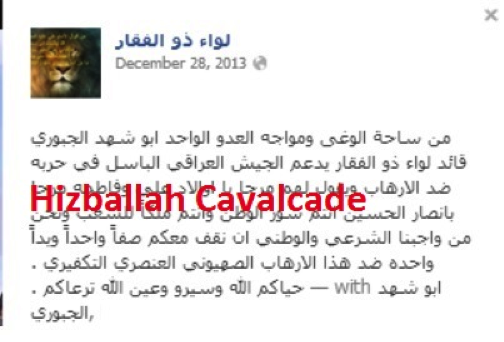
Figure 1: An announcement of support for the Iraqi Army’s efforts in Anbar from the official Liwa’a al-Zulfiqar Facebook page.
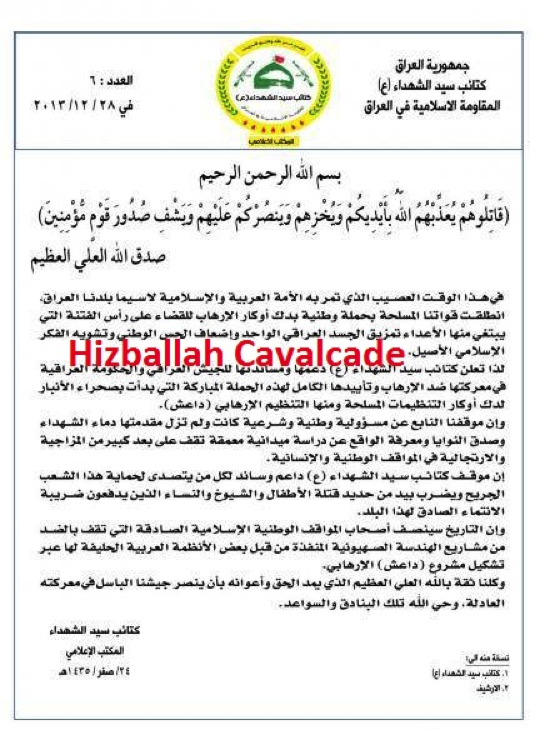
Figure 2: Kata’ib Sayyid al-Shuhada’s release in support of the Iraqi government’s offensive into Anbar.
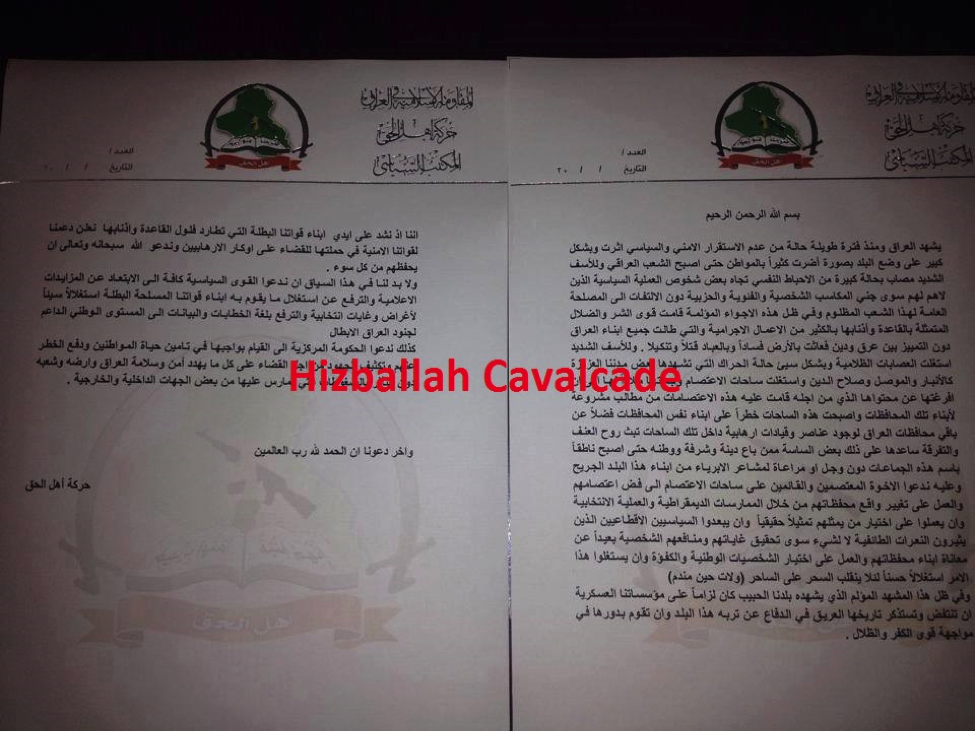
Figure 3: Asa’ib Ahl al-Haq’s statement about their support for the Iraqi government and military against ISIS and armed groups in the country.
Main Messaging Themes:
- National Institutions: Shia Islamist groups have claimed to fully support the Iraqi Army and present themselves as integral elements to the Iraqi military and police operations in Anbar. This theme coincides with other Iranian-backed organizations messaging, namely the narrative presented by Lebanese Hizballah and their claims of fully backing the Lebanese Armed Forces.[7]
- One Army, One Sect: Photos and statements implying the Iraqi military and police are engaging in the fight against ISIS to defend Shi’ism. These themes are also combined with photos claiming to show members of the military and/or police showing support for certain Shia political leaders and clerics. This sort of rhetoric had gone on since the spring of 2013 during the initial announcements of foreign Shia fighter involvement in Syria. In one May 2013 photo, a soldier reportedly from the Iraqi Army is shown holding a Shia religious banner on top of what is claimed to be an Iraqi military armored vehicle (see below).
- Two Fronts, One War: Tying the war in Syria to the fighting in Iraq involves extending the “Defense of the Sayyida Zaynab” (the defense of the Sayyida Zaynab shrine in southern Damascus is held as the reason for Shia Islamist fighters are in Syria) narrative which claims Shia Islamist armed groups are present in Syria to protect holy shrines/Shi’ism and stop jihadi-linked fighters. As a result, the engagements within Iraq which claim to also target ISIS and other organizations are grouped together as part of a unified effort to protect Shi’ism.
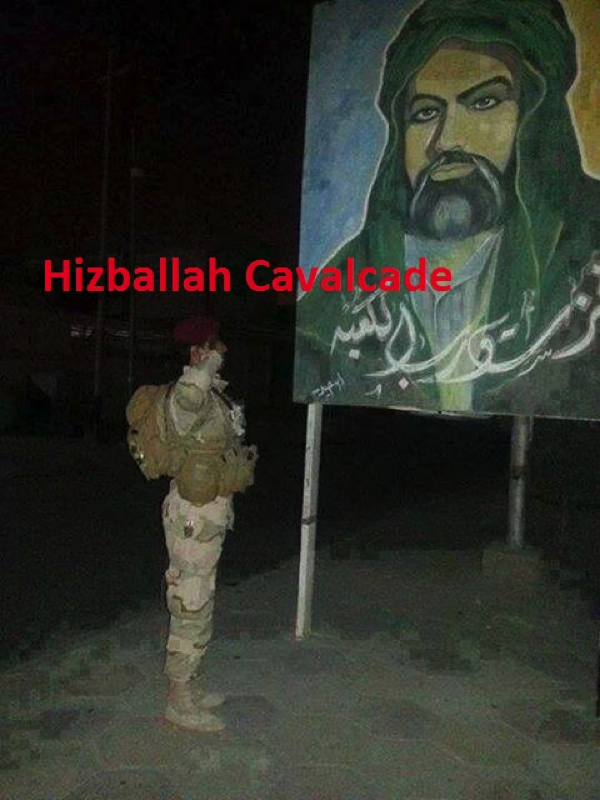
Figure 4: A photo uploaded in mid-January with the caption, “We will not be defeated”. The photo reportedly shows an Iraqi Army soldier saluting a Shia religious poster.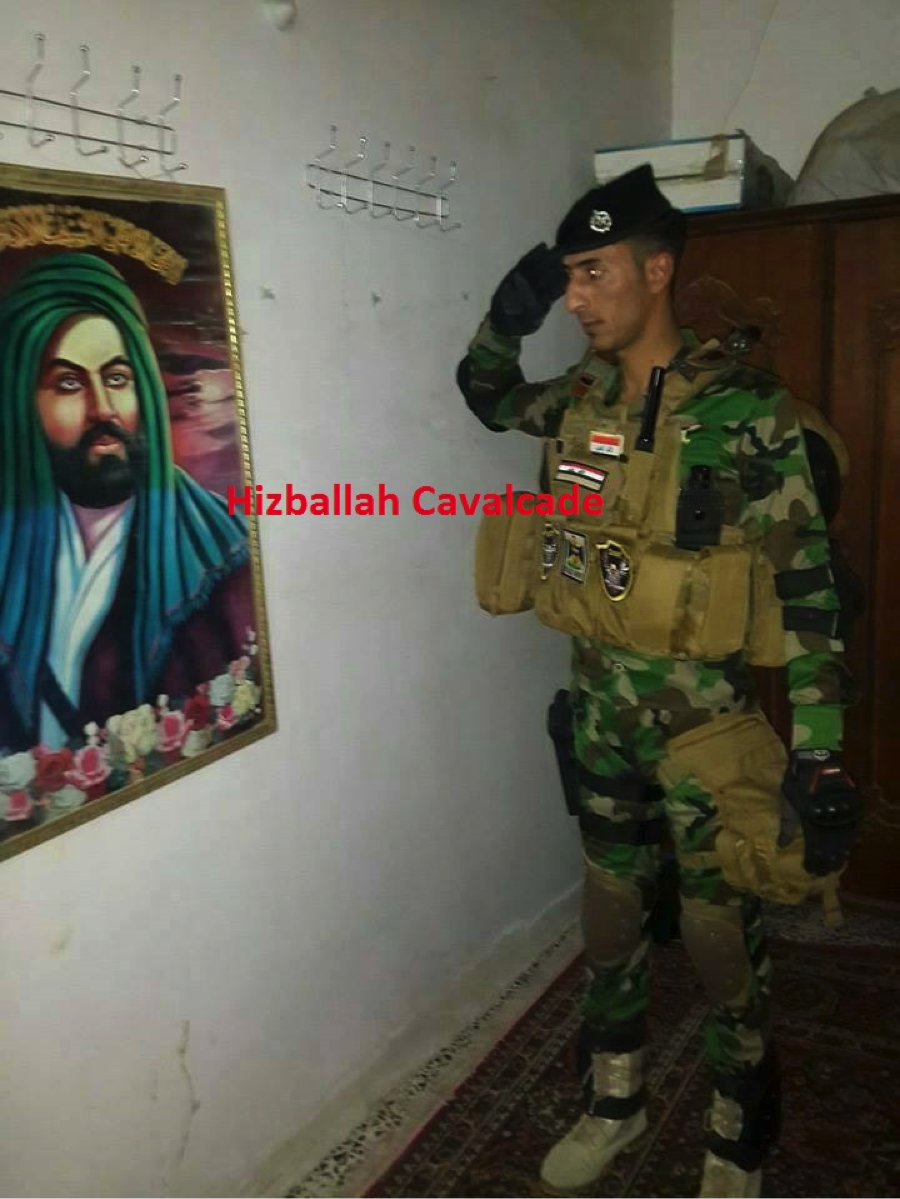
Figure 5: Photo claims to show an Iraqi soldier saluting a picture of martyred Shia leader, Imam Husayn. The photo was posted onto numerous social media pages catering to Shia Islamist fighters in Syria.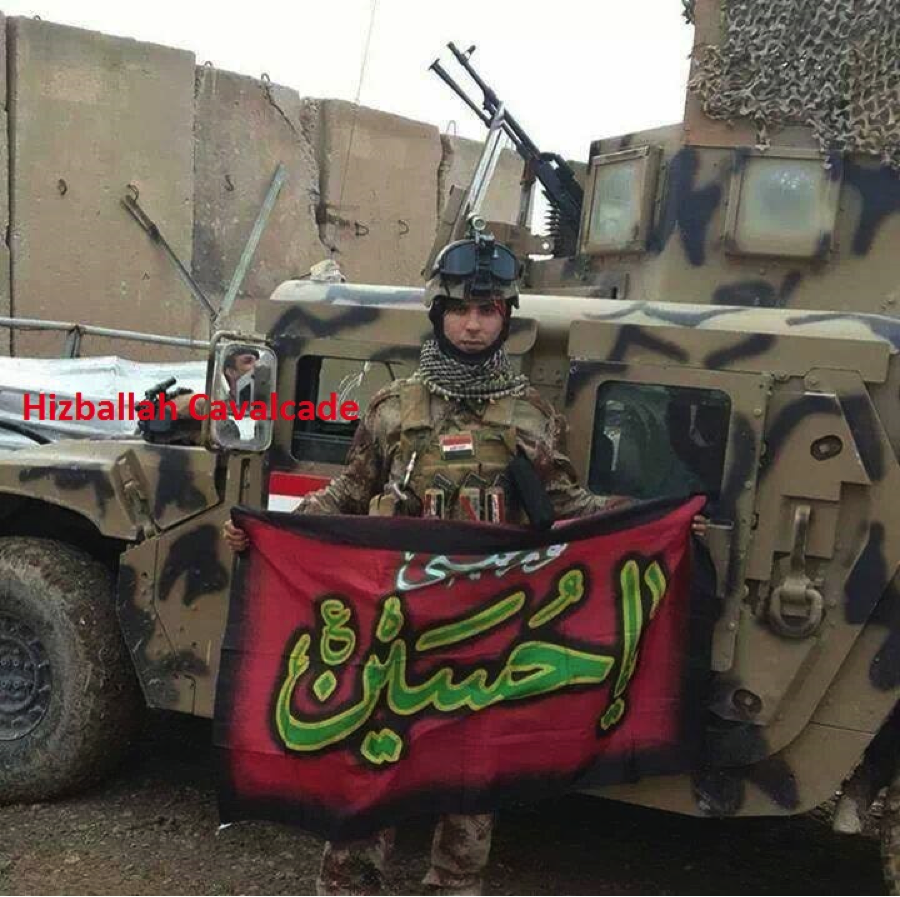
Figure 6: This photo claims to show an Iraqi soldier holding an Imam Husayn flag in front of an armored vehicle. The photo was widely circulated on Shia Islamist social media pages.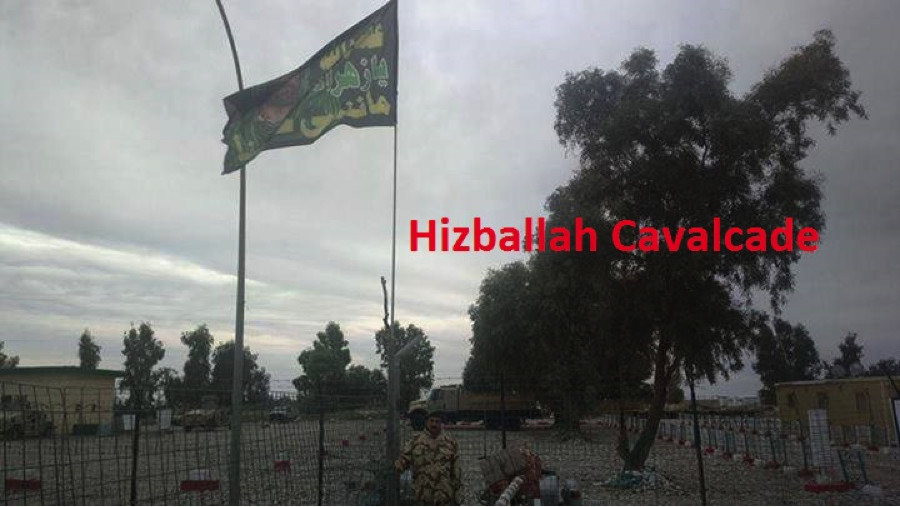
Figure 7: Photo purports to show an Iraqi soldier under a Shia banner following the, “Capture of Ramadi”. The photo was posted on Badr Organization and Asa’ib Ahl al-Haq social media pages.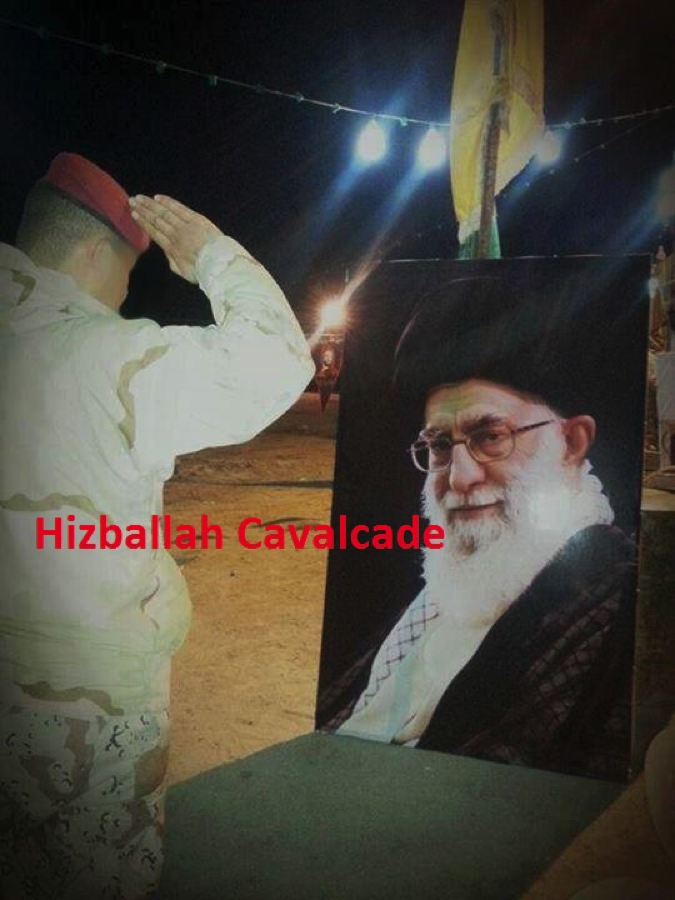
Figure 8: This photo claimed to show an Iraqi soldier saluting Iranian Supreme Leader Ayatollah Khamenei.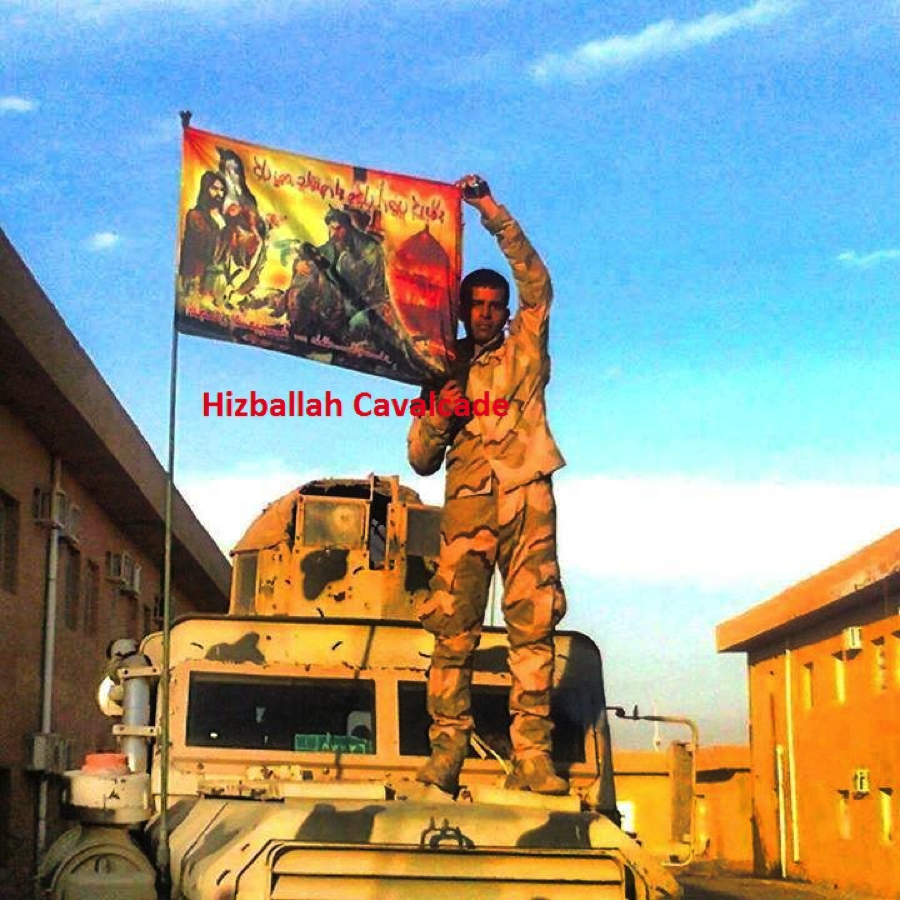
Figure 9: First uploaded to Shi’a Islamist social media in May 2013, this photo claims to show an Iraqi soldier atop an armored vehicle holding a Shi’a religious banner.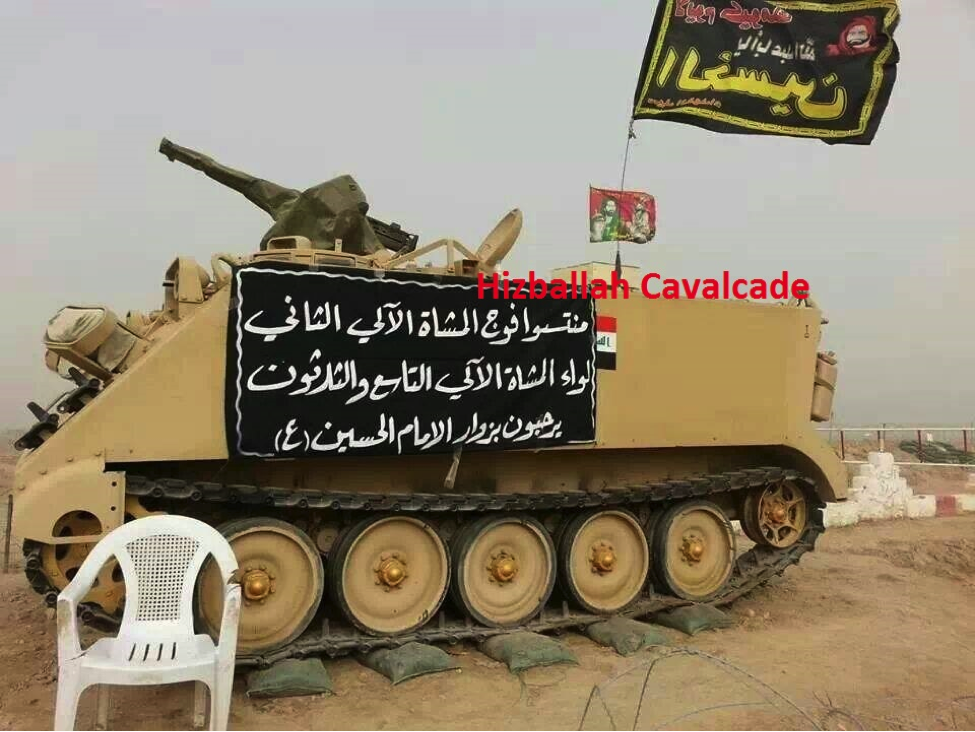
Figure 10: An Iraqi armored personnel carrier (APC) flying flags for Shia Imam Husayn with a sign partially reading, “Welcoming visitors to Imam Husayn [mosque and shrine in Karbala, Iraq]”. While the context of the photo is probably more innocuous—It is likely this APC was simply part of a guard set up in Karbala and was used to welcome pilgrims—ISIS/Sunni Islamist activists and Shia Islamist groups circulated the photograph as proof of the Iraqi Army’s sectarian loyalties.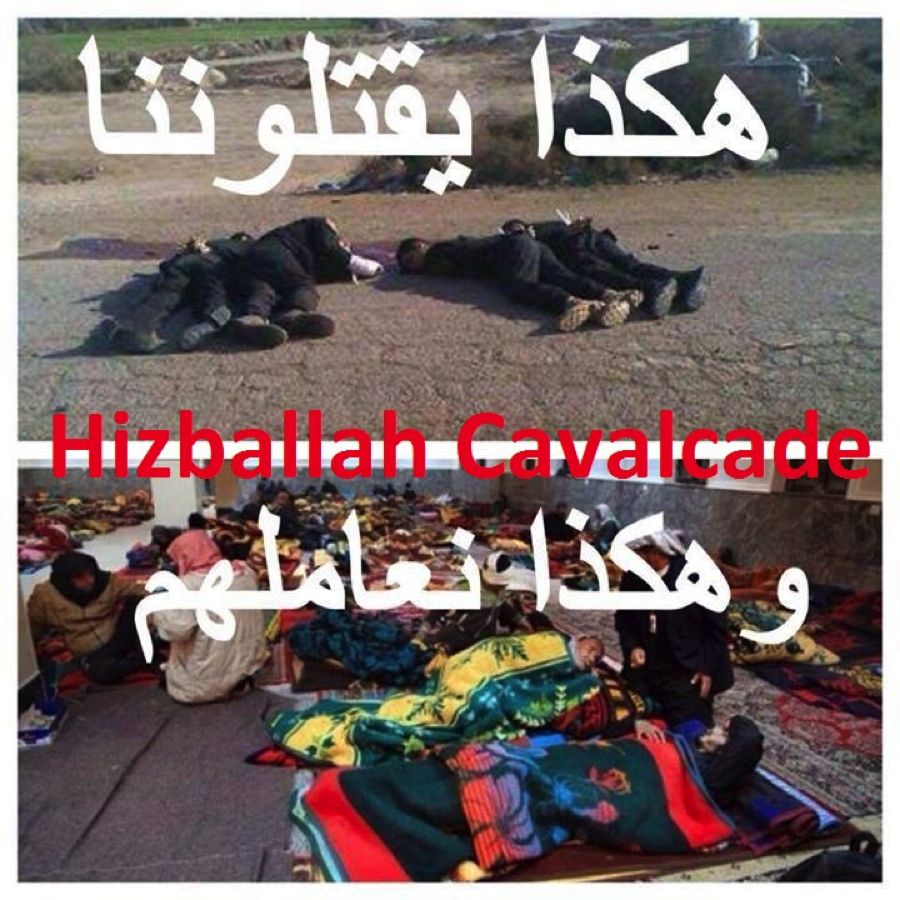
Figure 11: Top photo: “This is how they kill us”. Bottom photo: “And this is how we treat them”. The top picture shows Iraqi soldiers executed by ISIS. The bottom references reports of Shia Muslims taking in Sunni Muslim refugees from Anbar.[8] The photo was not widely distributed, but could be found on pages and profiles catering to Iranian-backed Shia Islamist organizations (mainly Asa’ib Ahl al-Haq).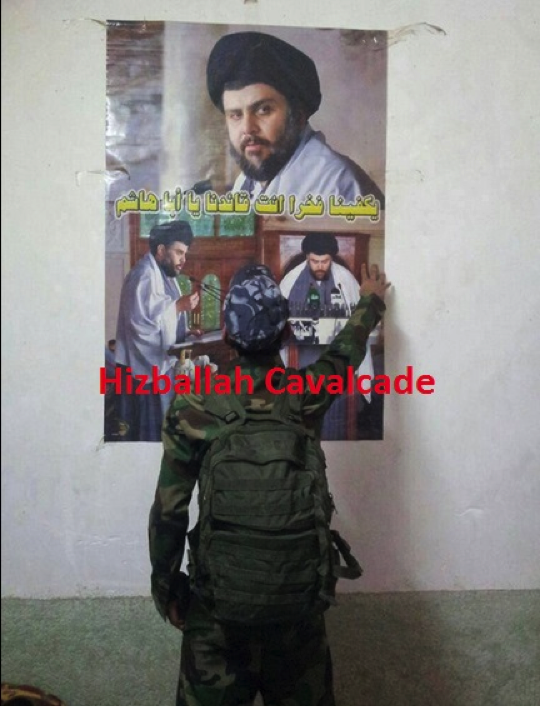
Figure 12: This photo, spread on Sadrist and Sadr-splinter group social media, claims to show an Iraqi soldier reaching out to a Muqtada al-Sadr poster.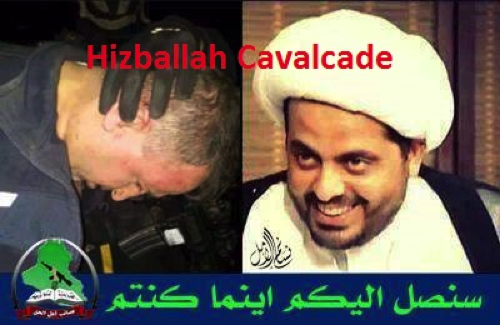
Figure 13: Asa’ib Ahl al-Haq leader Qais al-Khazali smiles (right) while Iraqi Sunni MP Ahmed al-Alwani is detained by Iraqi security forces (left).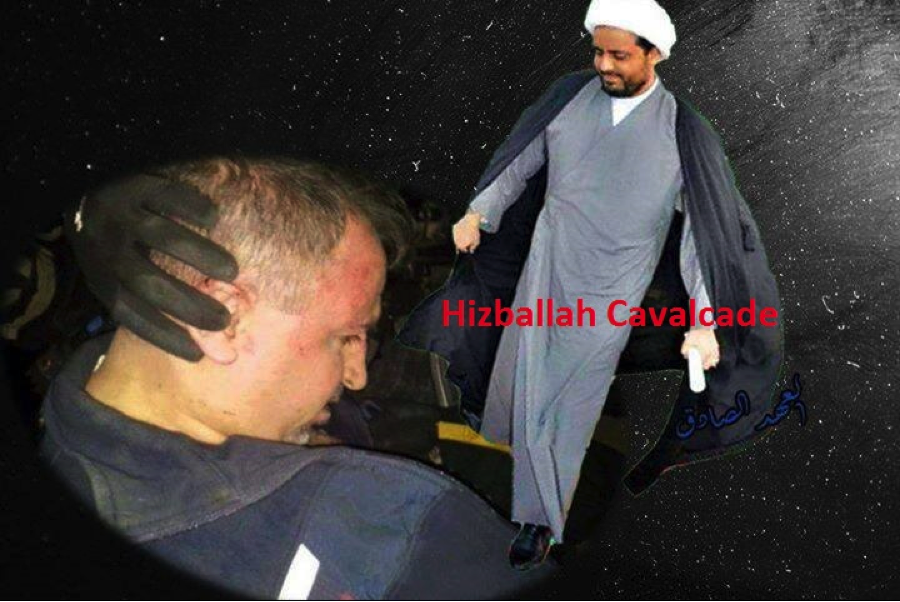
Figure 14: Qais al-Khazali is portrayed as walking on the captured Iraqi Sunni MP Alwani.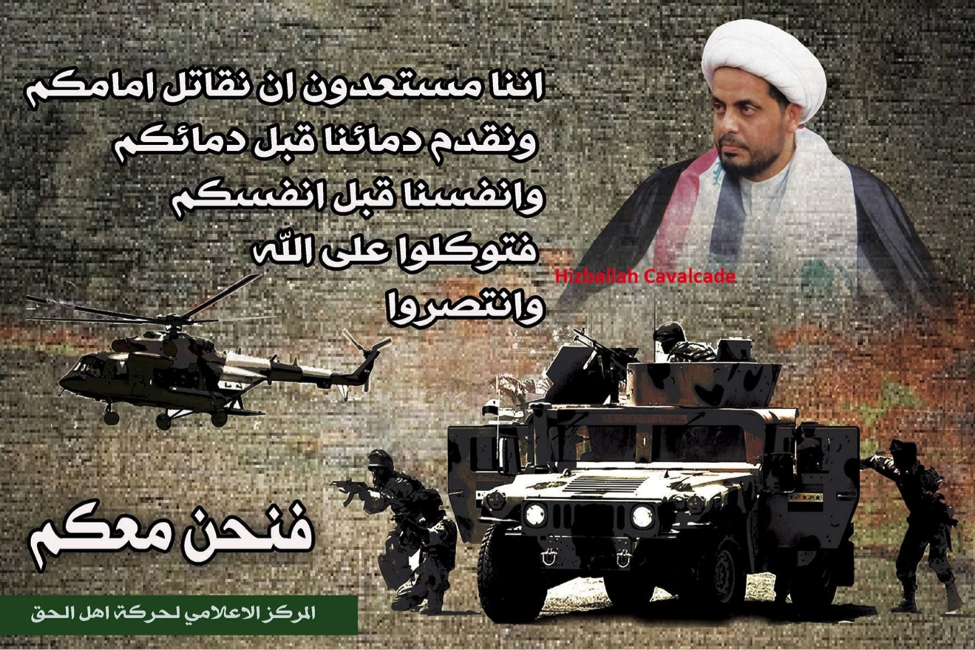
Figure 15: “Thus, we support you”. An AAH poster shows AAH leaer Qais al-Khazali looking down on Iraqi army soldiers and an Iraqi helicopter.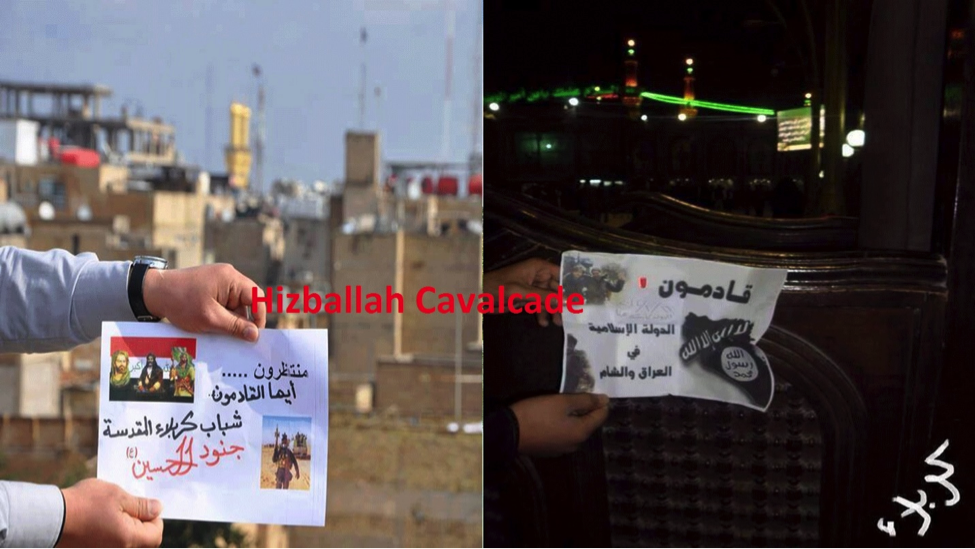
Figure 16: Selfie Taunts: On the right an ISIS supporter holds up a picture near the Imam Husayn Mosque/Shrine complex in Karbala. The sign reads, “Qadimoun” (“We are coming”). As a response to the pro-ISIS message, (on the left) “We are waiting for those coming, [we] the young men of sacred Karbala Soldiers of Husayn”.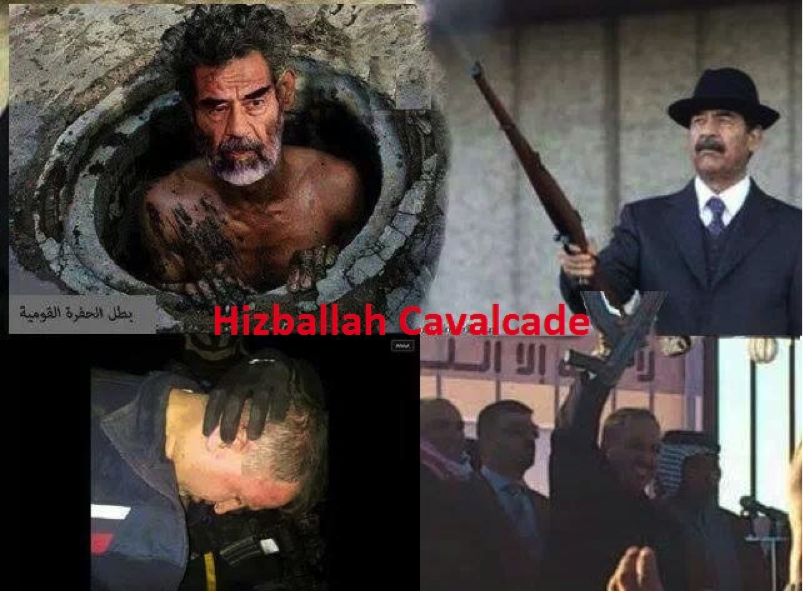
Figure 17: Right Left (top) An edited photo shows deposed Iraqi leader Saddam Husayn emerging from a dirty sewer. Left (bottom) Alwani is shown following his capture. The photo was spread on Sadrist and Iranian-backed Shia Islamist pages. The image promotes a theme of “how the mighty have fallen.” 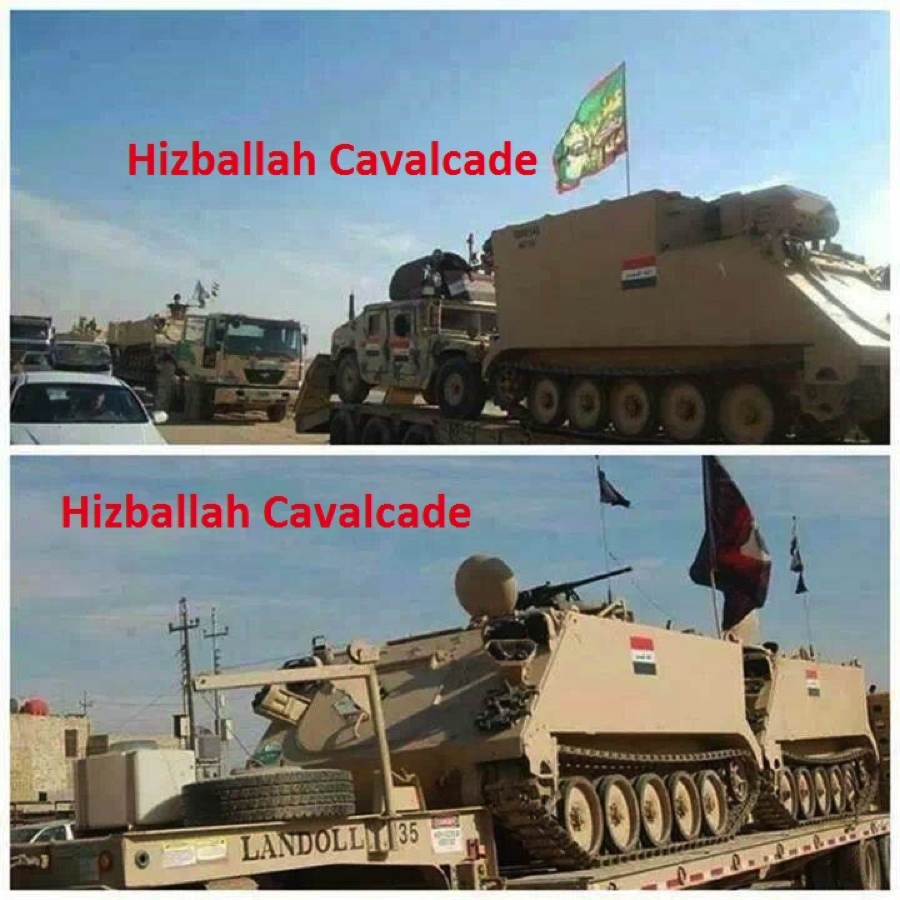
Figure 18: Another photo released on social media claiming to show Iraqi APCs flying Shia religious flags. The photos were shared online by ISIS sympathizers and Shia Islamist groups. The latter used the photos as a subtle way to suggest the Iraqi Army had Shia Islamic sectarian loyalties.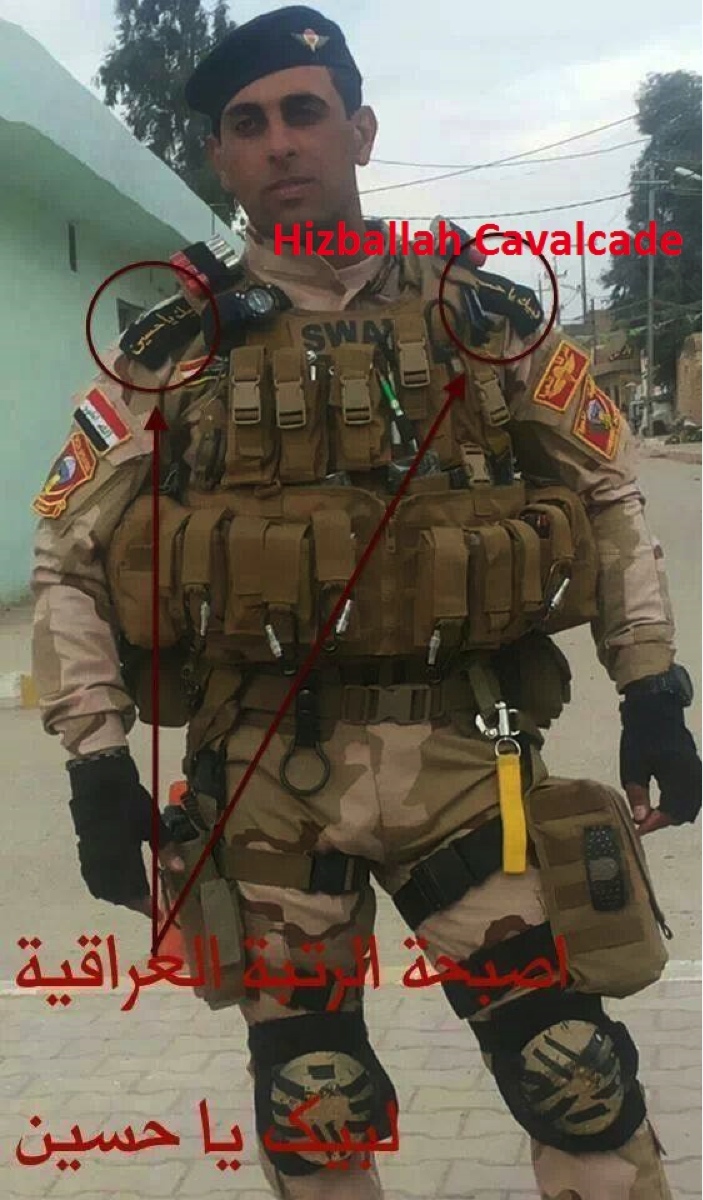
Figure 19: Shia Islamist and Sunni supporters of the protests and of ISIS circulated this photo on social media (including Twitter and Facebook). The photo purports to show an Iraqi Special Forces/SWAT member wearing epaulettes reading, “Labayk ya Husayn” (“At your service, O Husayn”), a Shia slogan used to show support for the Shi’ism’s first Imam.
One video uploaded claimed to show Iraqi units assembling before heading into Anbar and flying Shia religious flags. Due to the lower quality of the images in the video, the claim could not be confirmed. Accounts affiliated with Asa’ib Ahl al-Haq also uploaded a response to the offensive against ISIS. In their clip, a man sets up a system for a unmanned aerial vehicle (UAV) which then spots what can assumed to be ISIS positions. The ISIS positions are then destroyed. The clip was entitled, “A message from Asa’ib Ahl al-Haq to Da’sh” (note: Da’sh is the Arabic acronym for ISIS).
New series of tweets from Abū Sa'd al 'Āmilī: "On the al-Qā’idah Statement About the Relationship With Islamic State of Iraq and al-Shām"
السلام عليكم ورحمة الله،
بودي أن اتناول آخر المستجدات وآخر نتائج وردود افعال بيان القيادة العامة لتنظيم القاعدة حول الشام ولكن في حدود.
فالغاية من الحديث هو تفويت الفرصة على اعداء الجهاد ونسف احلامهم واغاظتهم بالتصريح بكل يقين أن الجهاد في بلاد الشام سيتواصل ولن يتوقف او يضعف.
اما الدولة الاسلامية في العراق والشام التي هي هدفكم من وراء هذه المؤامرات ايها المنافقون واعوان الصحوات وخونة الجهاد فستكون اقوى مما تظنون.
بيان القيادة العامة لم نتوقعه ولم نرض به الا أننا نحسبه في مصلحة الدولة ولانتهم القيادة العامة بأي تهمة، نسكت ولا نقول عن قادتنا الا خيرا.
فالذي ينبغي استيعابه ان مشروع الجهاد لا ينبغي ان يرتبط بأشخاص أو طوائف لأنها زائلة بل لابد ان يرتبط بالحي الذي لا يموت وبالسند الذي لا يزول
كما أن مشروع الجهاد لا تتغير وجهته بتغير وجهات رجاله، لأن هؤلاء الرجال هم من يحتاج الى بركة الجهاد وليس العكس،وهم من يستفيد وليس العكس
الساحة الشامية مختلفة عن الساحات الأخرى فأكيد ان لها خاصيات متميزة،لهذا اقول ربما قد يكون في استقلالية ولا مركزية العمل الجهادي مصلحة اكبر
اقصد انه قد يكون من الأنفع لمسيرة الجهاد ان تعمل الدولة مستقلة وتواصل الجبهة وغيرها من الطوائف الصادقة بشكل مستقل ولا اتحدث عن طوائف الضرار
قد يكون هذا حلا مؤقتا لتفادي الكوارث والأضرار الكبرى على مشروع الجهاد،ولكن بشرط ان توجه كل البنادق صوب العدو وصوب من وقف في صفه واعانه
نتمنى على اخواننا في كل الطوائف المتصارعة ان يتفرغوا لدفع الصائل ويتبادلوا الأسرى فيما بينهم ليتفرغوا لفك اسراهم لدى العدو،هذا طلب ملح
لم ولن نطلب من أحد ان يبايع احداً،بل تكفي البيعة التي انتم عليها وجسدوها على ارض الواقع وامزجوها بالإخلاص والتجرد لربكم والتفرغ لقتال عدوكم
الساحة كفيلة لوحدها بأن تظهر إخلاص ونوايا كل احد،ولستم بحاجة الى مزايدات وحرب كلامية لكي يظهر مدى ارتباط كل واحد بغايات الجهاد الثابتة
الجهاد ماض الى يوم القيامة ولن يوقفه بيان أو خلاف أو شبهات أو أكاذيب ولا مكر المنافقين أو خيانة الصحوات أو تثبيط المثبطين على مختلف الوانهم
كلمة الى احبابي الأنصار:
لا تكونوا عونا للعدو على اخوانكم المجاهدين،ولا تنصبوا انفسكم ناطقين باسمهم،فليس كل ما يعرف يقال واسروا النصيحة لهم
ايها الأنصار لعلكم تضرون مشروع الجهاد من حيث لا تشعرون،فالمطلوب التأني وانتظار ظهور ثمار ما يخفى أو يغم عليكم من اعمال ومواقف لإخوانكم
احبابي الأنصار
تذكروا انكم جزء مهم من مشروع الجهاد فلا ترضوا لأنفسكم ان تكونوا ثغرة لدخول العدو الى جسد امتكم من اجل تخريب دينكم
بل يجب أن تقفوا على كل الثغور وتسدوا الثغرات وتحموا ظهور اخوانكم لا ان تطعنوهم في ظهورهم،فاتقوا في اقوالكم وافعالكم ولا تقولوا الا خيرا
تعلموا الصبر والحكمة والأناة والتواضع للحق،فما تضرر مشروع الجهاد الا بسبب غياب بعض تلكم العناصر،دين الله غالب فحققوا شروط النصر في انفسكم
مسيرة الجهاد لابد ان يطالها ما ترون من مكر وكيد،ولكنها لا تضعف بإذن الله بل قد تتقوى والضربة التي لا تقصم ظهرك تقويه،ولا فرج الا بعد الضيق
نحن مستبشرون وراضون بأمر الله تعالى وقدره،فما قدر الله فيه خير لعباده،ونعلم بقينا ان الله يمكر لعباده في الوقت الذي يتمكن منهم اليأس والقنوط {حتى اذا استيأس الرسل وظنوا انهم قد كذبوا جاءهم نصرنا}، فالنصر يكون ثمرة لصبر العبد ويقينه في ربه بالرغم من بلوغ اليأس منه مبلغه
اسأل الله تعالى أن يكون بيان القيادة العامة سحابة صيف،بل وبردا وسلاما على إخواننا خاصة في الدولة،وان لا يؤثر على مسيرة الجهاد في الشام
وظني بإخواني في الدولة والجبهة انهم اكثر شموخا وصلابة من أن يتزعزعوا بسبب مدح او ذم أو بسبب نصيحة حتى لو كان فيها شدة،وتظل اخوة الدين قائمة
رحم الله من جمع هذه التغريدات ونشرها نصرة لإخواننا في بلاد الشام،وكلنا ندور مع الحق حيث دار ونعادي من عادى اهل الحق بكل اطيافهم
انتهى
__________
To inquire about a translation for these tweets for a fee email: [email protected]
al-I’tiṣām Media presents a new video message from the Islamic State of Iraq and al-Shām: “A Window Upon the Land of Epic Battles #44"
NOTE: For prior parts in this series see: #43, #42, #41, #40, #39, #38, #37, #36, #35, #34, #33, #32, #31, #30, #29, #28, #27, #26, #25, #24, #23, #22, #21, #20, #19, #18, #17, #16, #15, #14, #13, #12, #11, #10, #9, #7, #6, #5, #4, #3, #2, and #1.
–
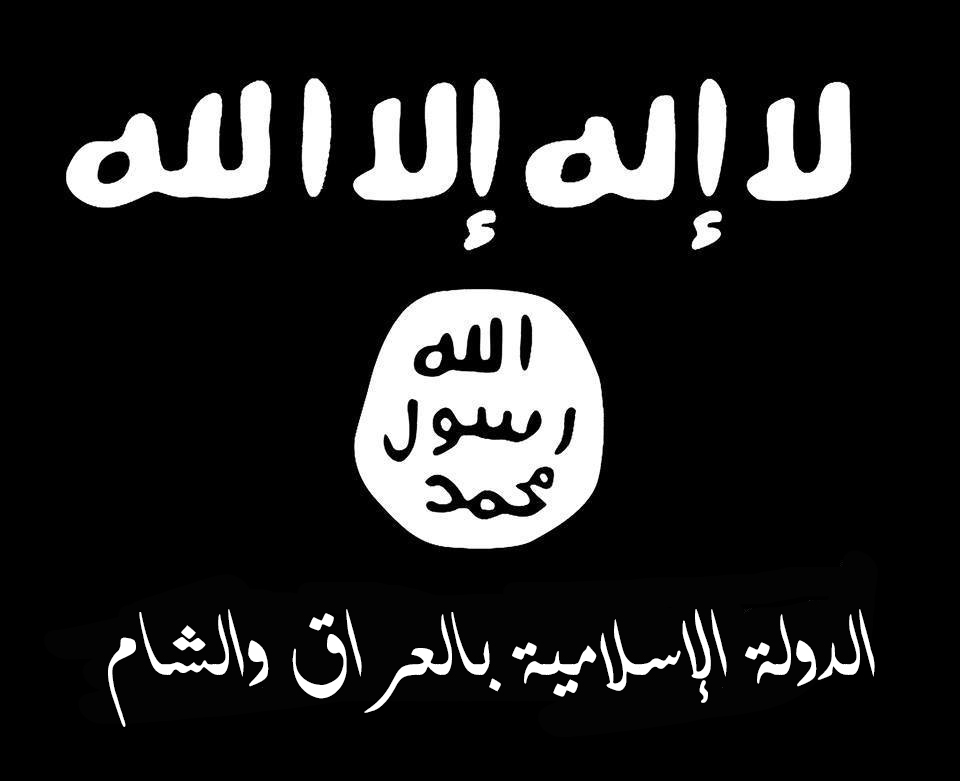
__________
To inquire about a translation for this video message for a fee email: [email protected]
New statement from al-Qā’idah in the Arabian Peninsula: "Congratulations to the Amīr of the ‘Abd Allah ‘Azzām Brigades the Commander Mājid al-Mājid”
UPDATE 2/14/14 10:53 AM: Here is an English translation of the below Arabic statement:

Click the following link for a safe PDF copy: al-Qā’idah in the Arabian Peninsula — “Congratulations to the Amīr of the ‘Abd Allah ‘Azzām Brigades the Commander Mājid al-Mājid” (En)
__________
—

Click the following link for a safe PDF copy: al-Qā’idah in the Arabian Peninsula — “Congratulations to the Amīr of the ‘Abd Allah ‘Azzām Brigades the Commander Mājid al-Mājid”
_________
As-Saḥāb Media presents a new statement from al-Qā’idah's Shaykh Muḥammad bin Maḥmūd al-Baḥṭīṭī (Abū Dujānah al-Bāshā): "Message from the Opening of Khurāsān to the Opening of al-Shām"

Click the following link for a safe PDF copy: Shaykh Muḥammad bin Maḥmūd al-Baḥṭīṭī (Abū Dujānah al-Bāshā) — “Message from the Opening of Khurāsān to the Opening of al-Shām”
_________
To inquire about a translation for this statement for a fee email: [email protected]

